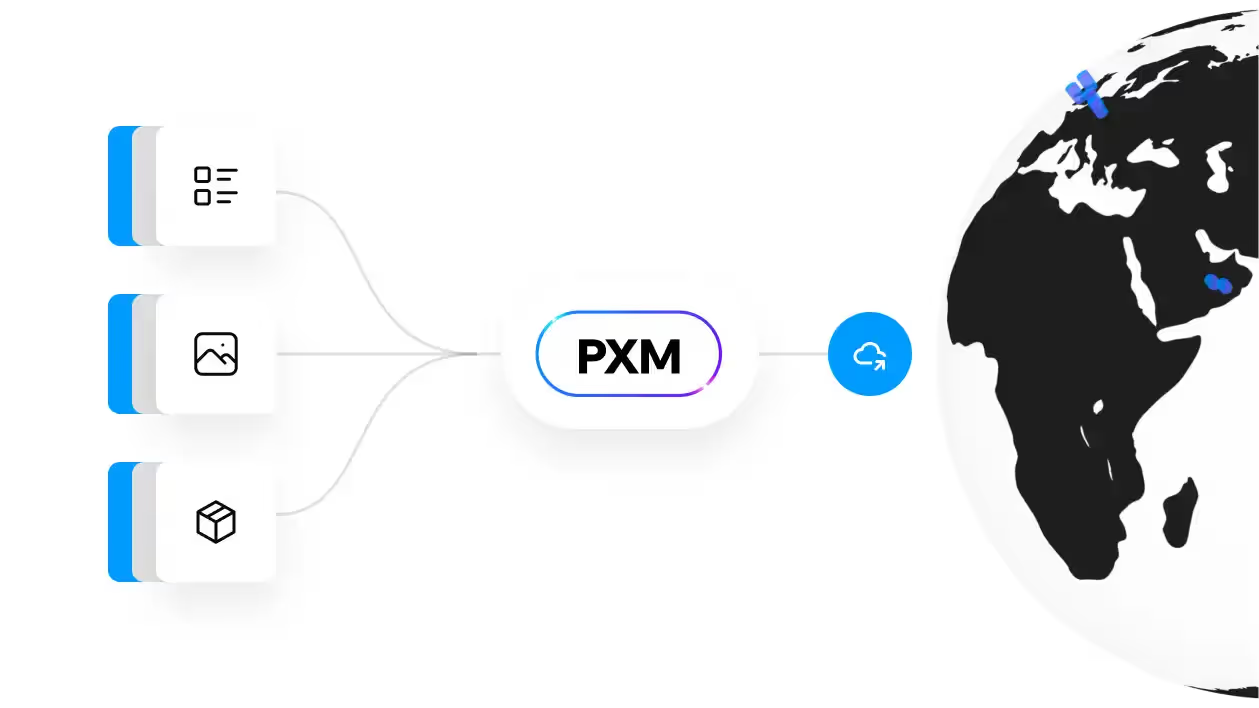Master Data Management Strategy: Guide and Best Practices
Master Data Management (MDM) refers to the processes that ensure key business data—like customer, product, and supplier information—is accurate, consistent, and accessible. It’s the key to turning messy, scattered data into a business-driving asset that increases efficiency, reduces errors, and improves decision-making.
What Is a Master Data Management Strategy?
A Master Data Management (MDM) strategy is a game plan for keeping your organization’s most important data accurate, up-to-date, and uniform across channels. A strong strategy does more than organize data—it also streamlines processes so everyone across the company works with a single source of truth.
The core purpose of an MDM strategy is to eliminate outdated, error-ridden data and empower teams to make smarter business decisions. It also helps organizations stay compliant, improve workflows, and enhance customer experiences.
Without a solid master data management framework, data can get disorganized quickly, leading to costly mistakes and missed opportunities. But the right approach allows you to turn data into one of your most valuable tools for growth.
Why Is a Master Data Management Strategy Important?
If you want to harness the full power of your data while ensuring accuracy, consistency, and compliance, a master data management strategy is a must.
Here’s why it’s so crucial:
- Improves Data Quality and Consistency: Standardizes and cleanses data, reducing inconsistencies. Eliminates duplicate records, providing a single source of truth. Offers access to reliable and high-quality data, improving operational efficiency.
- Enhances Decision-Making Processes: Provides a unified view of data across the organization and real-time access to clean and reliable data. Facilitates strategic planning and forecasting with data-driven insights.
- Supports Regulatory Compliance: Fosters data governance and ensures data integrity. Tracks changes and offers access to critical data. Reduces risks associated with data breaches, inaccuracies, or non-compliance penalties.
- Enables Digital Transformation: Breaks down data silos and integrates data across business functions. Facilitates automation and AI-driven analytics with clean data. Improves customer experiences through personalized and data-driven interactions.
Key Components for Implementing an MDM Strategy
Rolling out an effective MDM strategy isn’t something you can rush—it takes a clear, step-by-step approach to get it right. The goal is to keep your data accurate, consistent, well-governed, and seamlessly integrated across the organization.
Here are 11 key steps to make your MDM implementation a success:
Step 1: Define Clear Objectives and Scope
Before kicking off an MDM initiative, it’s important to get clear on why it matters and what business problems it’s solving. Here’s where to start:
- Identify Business Drivers – What’s pushing the need for MDM? It could be improving data quality, staying compliant, gaining better customer insights, or boosting efficiency. Be sure to clearly document your main objectives.
- Define the Scope – Decide which data domains (like customers, products, vendors, or suppliers) will be managed under MDM.
- Align with Organizational Priorities – Make sure your MDM goals support bigger business initiatives, whether it’s digital transformation, AI-driven analytics, or enhancing the customer experience.
Step 2: Secure Stakeholder Commitment and Sponsorship
For MDM to succeed, you need more than just a good plan—you need the right people backing it. Here’s how to secure commitment:
- Get Executive Sponsorship – Senior leaders should actively support MDM efforts to ensure the right resources and company-wide alignment.
- Engage Key Stakeholders – Bring in teams from IT, business, compliance, and operations to make sure everyone’s needs are covered.
- Form a Cross-Functional Steering Committee – This group will provide ongoing oversight, make key decisions, and resolve issues as they come up.
Step 3: Establish Data Governance
MDM won’t work without a solid governance framework to keep data accurate, secure, and compliant. Follow these steps to put one in place:
- Define Roles and Responsibilities – Assign data owners, stewards, and sponsors so there’s clear accountability for managing data.
- Create Data Policies and Standards – Set rules for data entry, validation, access, and usage to keep everything consistent.
- Establish Conflict Resolution Processes – Have a plan for handling discrepancies, redundancies, and ownership disputes before they become bigger issues.
Step 4: Conduct Master Data Inventory and Assessment
Before jumping into MDM, you need a clear picture of your current data landscape. Here’s how to get there:
- Identify and Catalog Data Sources – List all databases, apps, and storage systems that hold master data.
- Analyze Data Quality – Check for accuracy, completeness, consistency, and redundancy issues.
- Document Gaps and Fixes – Identify duplicate records, missing values, and inconsistent formats that need attention.
Step 5: Select and Deploy Appropriate MDM Tools and Technology
Picking the right MDM solution is key to smooth integration and long-term success. Find the right one for your organization with these steps:
- Evaluate MDM Approaches – Decide between centralized, federated, or hybrid models based on your needs.
- Define Tech Architecture – Make sure the MDM platform works with your ERP, CRM, and analytics tools.
- Plan Deployment – Choose between cloud, on-premise, or hybrid setups based on security, scalability, and cost.
Step 6: Develop Data Integration and Quality Management Processes
You’ll need strong processes in place to ensure data stays clean and consistent across systems. Here’s how to get started:
- Set Data Cleaning Rules – Standardize, match, merge, and enrich data across platforms.
- Create Integration Workflows – Use batch processing, real-time sync, and APIs to keep data flowing.
- Monitor Data Quality – Track accuracy, duplication, and completeness over time.
Step 7: Pilot Implementation
A small-scale test run helps work out the kinks before a full rollout. Follow these steps for your pilot:
- Start with a Single Data Domain – Pick a manageable area like customer data, product information, or vendor details—data that can give you clear insights into the effectiveness of your strategy.
- Deploy and Test – Validate how well your integration, quality rules, and governance policies hold up.
- Evaluate and Adjust – Learn from the pilot, document lessons learned, and refine your strategy before expanding.
Step 8: Train Stakeholders and Manage Change
MDM only works if people use it correctly, so training and communication are critical. Get teams on board with these strategies:
- Develop Comprehensive Training Programs – Create detailed training for end-users to ensure they understand MDM policies, tools, and how it fits into their daily tasks.
- Highlight the Benefits and Roles – Clearly explain how MDM will make things easier, who’s responsible for what, and why everyone’s role matters.
- Tackle Change Head-On – Address any concerns early by offering workshops, helpful guides, and continuous support to make the transition as smooth as possible.
Step 9: Full Rollout and Scaling
Once the pilot proves successful, it’s time to take your MDM strategy to the next level. Here’s how to move forward:
- Expand Gradually – Implement MDM in phases, tackling one data domain and one department at a time.
- Keep an Eye on Adoption – Monitor performance, usage, and data quality improvements. Adapt your strategy based on feedback and lessons learned.
- Be Ready to Scale – Ensure your MDM system can handle increasing data volumes and future organizational growth.
Step 10: Monitor, Evaluate, and Optimize Continuously
MDM isn’t a one-and-done project—it needs ongoing maintenance. Ensure lasting success with these tips:
- Set Key Performance Indicators (KPIs) – Measure data accuracy, governance compliance, and business impact.
- Run Regular Audits – Catch and fix data issues before they cause problems.
- Adapt to Business Needs – Update strategies as regulations, technology, and priorities change.
Step 11: Sustainment and Long-Term Governance
To keep MDM effective, it has to be embedded in daily operations. Here’s how to maintain your processes in the long run:
- Integrate MDM into Workflows – Make it a natural part of decision-making and reporting.
- Keep Governance Active – Ensure data owners and stewards stay involved and conduct regular policy reviews.
- Stay Ahead of Changes – Be ready to adapt to new compliance rules, business models, and tech advancements.
Overcoming Common Implementation Challenges
When businesses implement MDM, a few challenges tend to pop up. Here’s a look at some of the common roadblocks and how to overcome them:
- Cost – MDM implementation can be expensive, especially when considering software, training, and ongoing maintenance. To manage costs, start small with a pilot project and scale up as you see the benefits.
- Time – In reality, set up, integration, and change management can take anywhere from six months to two years. Avoid feeling rushed by breaking the process into manageable phases, prioritizing key areas, and setting realistic timelines.
- Organizational Resistance – People often resist change, especially when it affects their daily work. Address this upfront by clearly communicating the value of MDM for key stakeholders, involving teams early, and providing ongoing training and support.
Measuring Success: MDM KPIs and Metrics
To truly unlock the power of your MDM strategy, it’s essential to track the right key performance indicators (KPIs). These metrics help you measure data quality, ensure seamless integration, and gauge the real business impact of your MDM efforts.
Here are the most important KPIs to monitor for a successful MDM journey:
- Data Quality Metrics – Keep an eye on things like accuracy, completeness, consistency, and duplication to make sure your data is solid and ready for smart decision-making.
- Data Governance and Compliance – Track how well you're sticking to governance policies, passing compliance audits, and keeping data secure to stay on top of regulatory requirements.
- Data Integration and Performance – Watch how well your systems sync up, how quickly data gets processed, and how fast your APIs are working to ensure smooth integration across the board.
- Business Impact – Look at how MDM is boosting decision-making accuracy, improving efficiency, keeping customers happy, and driving revenue to show the real value of your efforts.
By keeping an eye on these KPIs, you can continuously optimize your approach, build confidence in your data, and show tangible results that drive better decisions and outcomes.
Moving Forward with Master Data Management
MDM ensures accurate, consistent, and secure data across your organization. As the business landscape becomes increasingly competitive, it’s an essential tool for streamlining data processes and improving decision-making.
Take a moment to assess your data strategy. If you see gaps, now’s the time to take action and start implementing MDM.
Pattern’s Master Data Management Solution
Ready to streamline your data management and make better business decisions? Check out Pattern’s MDM Solution to optimize your data and deliver enhanced customer experiences today.
Pattern’s Master Data Management Solution
Ready to streamline your data management and make better business decisions? Check out Pattern’s MDM Solution to optimize your data and deliver enhanced customer experiences today.

Frequently Asked Questions
What are the 4 styles of MDM?
MDM can be implemented in four styles: Registry (links records via unique IDs, minimal data movement), Consolidation (centralized repository for cleansing and analytics), Coexistence (central hub with bidirectional syncing for consistency), and Centralized (single authoritative system for strict control and real-time accuracy). Ultimately, the choice depends on business needs.
What are the five core functions of master data management?
The five core functions of MDM are data governance, data integration, data quality, data security, and data modeling. These ensure that master data is accurate, consistent, secure, and aligned with the needs of the business across all systems.
How long does it typically take to implement an MDM strategy successfully?
MDM implementation can take anywhere from six months to two years, depending on the complexity of the organization, the scope of data domains, and the systems involved. A phased approach often helps speed up the process and ensures gradual success.
What are common signs that my organization needs an MDM strategy?
If you're noticing inconsistent data, data silos, duplicate records, or poor decision-making due to unreliable data, it’s likely time for an MDM strategy. These signs indicate that data management isn’t aligned with business needs and could benefit from a more structured approach.


.jpg)









